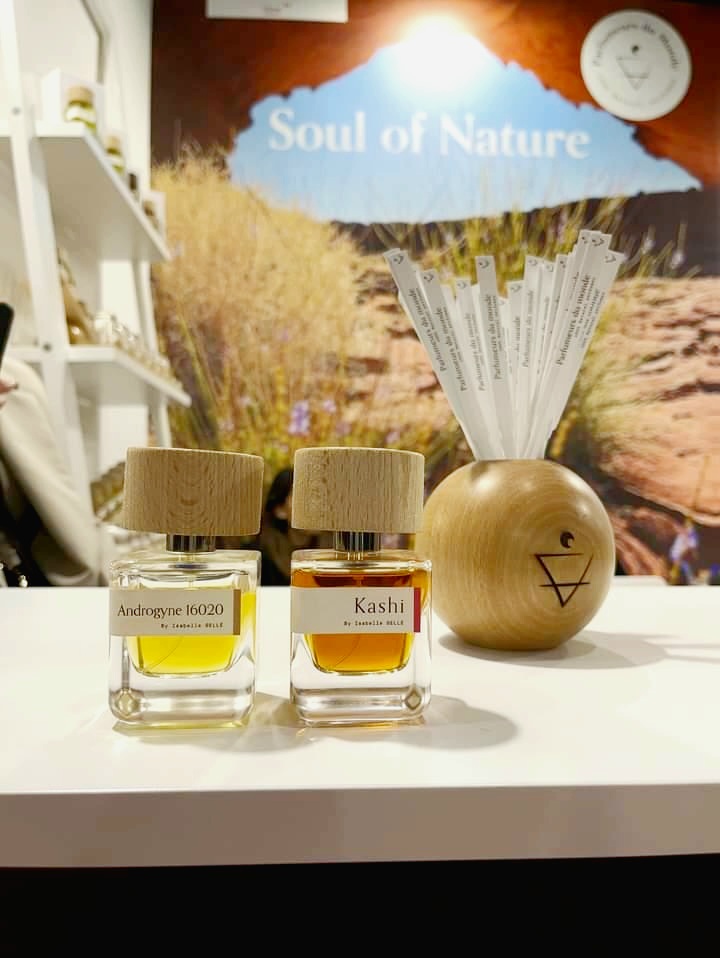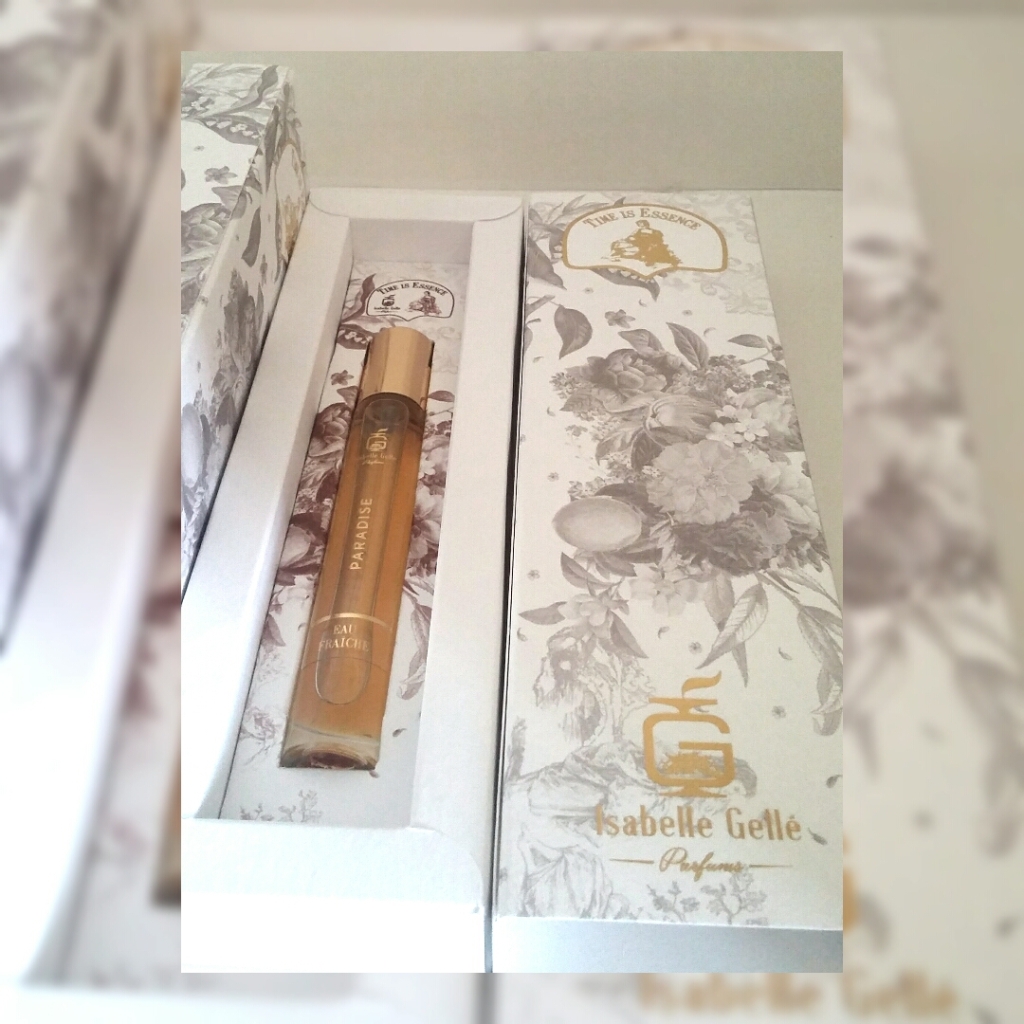Many people have asked me: what do you mean by ”making perfumes according to the ancient French methods”? So here I will explain what lies behind the process of artisan perfumery…
 But first, let me tell you: we work solely and only by the tradition of the Art of Perfumery… Most of us are self-taught creative perfumers. I started to blend as a kid while living on a beautiful South Pacific island. Am I a nose? By the definition of a ‘nose’, the mainstream perfume industry means ‘somebody who is able to smell up to 4000 scent chemicals and to create a new scent out of it’. Most so-called ‘noses’ are chemists… So in this sense, I am not a nose… I am just an artist with a sense of smell acquired throughout my life thanks to travelling the world! This is why my signature is focused on ‘exotic‘ perfumes.
But first, let me tell you: we work solely and only by the tradition of the Art of Perfumery… Most of us are self-taught creative perfumers. I started to blend as a kid while living on a beautiful South Pacific island. Am I a nose? By the definition of a ‘nose’, the mainstream perfume industry means ‘somebody who is able to smell up to 4000 scent chemicals and to create a new scent out of it’. Most so-called ‘noses’ are chemists… So in this sense, I am not a nose… I am just an artist with a sense of smell acquired throughout my life thanks to travelling the world! This is why my signature is focused on ‘exotic‘ perfumes.
From necessity to art…
In traditional perfume making, there was no ‘scientific method’ as such. Like in those days, INSPIRATION is behind all our creations. Needless to say that when inspiration shows up, we are not thinking of calculating ppm (parts per million) according to IFRA controversial recommendations or about the price of the oils we use! In the same way that you would not ask a painting artist to think of how many colours he should use or whether the blend of too much blue and yellow might give a green too intense or to use low quality gouache for his work of art, you cannot ask the creative perfumer to reduce the percentage of oils like oak moss to the minimum… The couple of extra drops DO make a difference in the end result. Which does not mean we do not consider the safety levels. No perfumer would add more of the so-called ‘ALLERGEN‘ oils than necessary!
The ancient French methods did not take into account any IFRA standards or any standards for that matter. French perfumery then was driven by necessity. Actually, the Grasse leather tanning industry actually started it in the 16th century. At the time, leather gloves were the necessary item for the luxury clients. But the strong smells of animal skin in the tanning workshops was making the city stink like no one’s business and the glove makers were desperate to find ways to get rid of this stench. They had the idea to use natural essential oils extracted from the flowers growing in the region such as jasmine and Rose de Mai to perfume the leather skins. This is how the corporation of perfumers & glovemakers (Parfumeurs et Gantiers) was born and this how perfumes made their way into our daily life.
Ancient French methods of perfume making: the basics…
Anybody who has seen the film, ‘Perfumer, story of a murderer’ can understand what lies behind the creation of a natural perfume: the attainment of Perfection, the perfect scent…
To understand better how a perfume is composed, you need to at least know the OLFACTORY PYRAMID that explains the notes we smell as the perfume evolves in time.
A basic perfume is composed of 3 notes:
- top note: lasting power of approx. 0 to 2 hours – ingredients are mostly citrus (Hesperides) notes but also fruit notes
- heart note: lasting power of approx. 15 min to 4 hours – ingredients are floral, aromatic or spicy
- base note: lasting power of approx. 1 hour to 24 hours – ingredients are usually woods, animalic notes and resins
The lasting power will depend on the choice of raw materials used, some being more volatile than others…
What is the difference between a perfume and an eau de parfum?
In simple terms, the more concentrated the essences of the perfume are, the more likely it is to have lasting power. Put in figures, a perfume usually averages 24% of essences while an eau de parfum only contains 15%. Of course, if some precious and expensive oils are used such as rose, sandalwood, neroli, Osmanthus, the price will also be reflected. In the old days and until the late 60’s, ingredients such as civet, deer musk and castoreum were used as fixatives. Their smell is fecal or like urine but in lower dosages, they transform the perfume in a beautiful way.
If you happen to smell an old perfume bottle, you will not fail to notice how lingering the smell is. These ingredients have been banned or their use restricted. Although we understand the reasons behind the ban (mostly harm to the animals as far as the extraction is concerned), most of the artisan perfumers using ancient French methods sometimes wish they could access such strong fixatives.
The uniqueness of natural perfumes…
When you start using natural perfumes, the first thing you notice is the lack of STABILITY. The molecules of the essential oils are more volatile than their synthetic versions and the natural perfume will rather tend to grow on your skin, matching your pH. This is why when 5 different persons try the same natural perfume, each smells different. A NATURAL PERFUME IS UNIQUE to the person who wears it. It is a real INTIMATE experience, only shared with the people close to you and not with the whole assembly in a room.
Natural perfume making is like wine-making: the more it macerates, the better it becomes but like wine, there are years when the crops are excellent, and other years when their yield does not produce the same quality…
In ancient perfumery, the aim was not to market on a big scale. Perfumes were considered a luxury and many were made-to-measure for an elite clientele. Then, at the end of the 19th century, synthetic and chemicals started to be used to make perfumes. These were not welcomed by the perfumery industry at first. Artisan perfumers said that using chemicals could never produce a pure perfume. But the costs of essential oils and precious ingredients and the market drive over the decades gradually eliminated the use of high quality and pure essential oils to be replaced by mostly aromachemicals.
In the second part to be published soon, I will explain the traditional process used from the creation to the end product…




Leave a comment